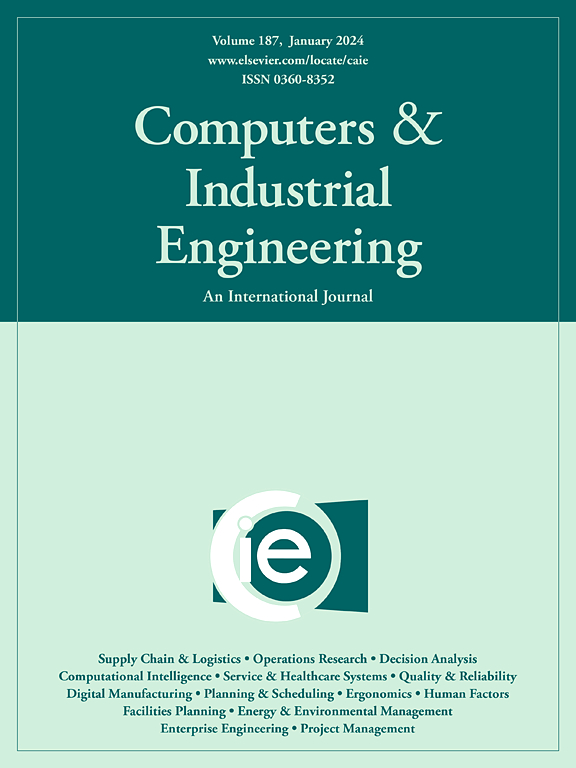条形排版的精确算法:如何从线性库存中切割一般物品,从而将损耗降至最低
IF 6.7
1区 工程技术
Q1 COMPUTER SCIENCE, INTERDISCIPLINARY APPLICATIONS
引用次数: 0
摘要
本文章由计算机程序翻译,如有差异,请以英文原文为准。
Exact algorithms in bar nesting: How to cut general items from linear stocks so that wastage is minimised
This paper proposes exact, polynomial-time algorithms that solve the problem of cutting items with angled sides from a single linear stock so that wastage is minimised. In industry, this problem is called “bar nesting”. Here we give an algorithmic framework that solves several important variants of the problem, including cutting items from stocks with asymmetric cross-sections, cutting items whose sides occur on different planes, and the minimum score separation problem.
求助全文
通过发布文献求助,成功后即可免费获取论文全文。
去求助
来源期刊

Computers & Industrial Engineering
工程技术-工程:工业
CiteScore
12.70
自引率
12.70%
发文量
794
审稿时长
10.6 months
期刊介绍:
Computers & Industrial Engineering (CAIE) is dedicated to researchers, educators, and practitioners in industrial engineering and related fields. Pioneering the integration of computers in research, education, and practice, industrial engineering has evolved to make computers and electronic communication integral to its domain. CAIE publishes original contributions focusing on the development of novel computerized methodologies to address industrial engineering problems. It also highlights the applications of these methodologies to issues within the broader industrial engineering and associated communities. The journal actively encourages submissions that push the boundaries of fundamental theories and concepts in industrial engineering techniques.
 求助内容:
求助内容: 应助结果提醒方式:
应助结果提醒方式:


